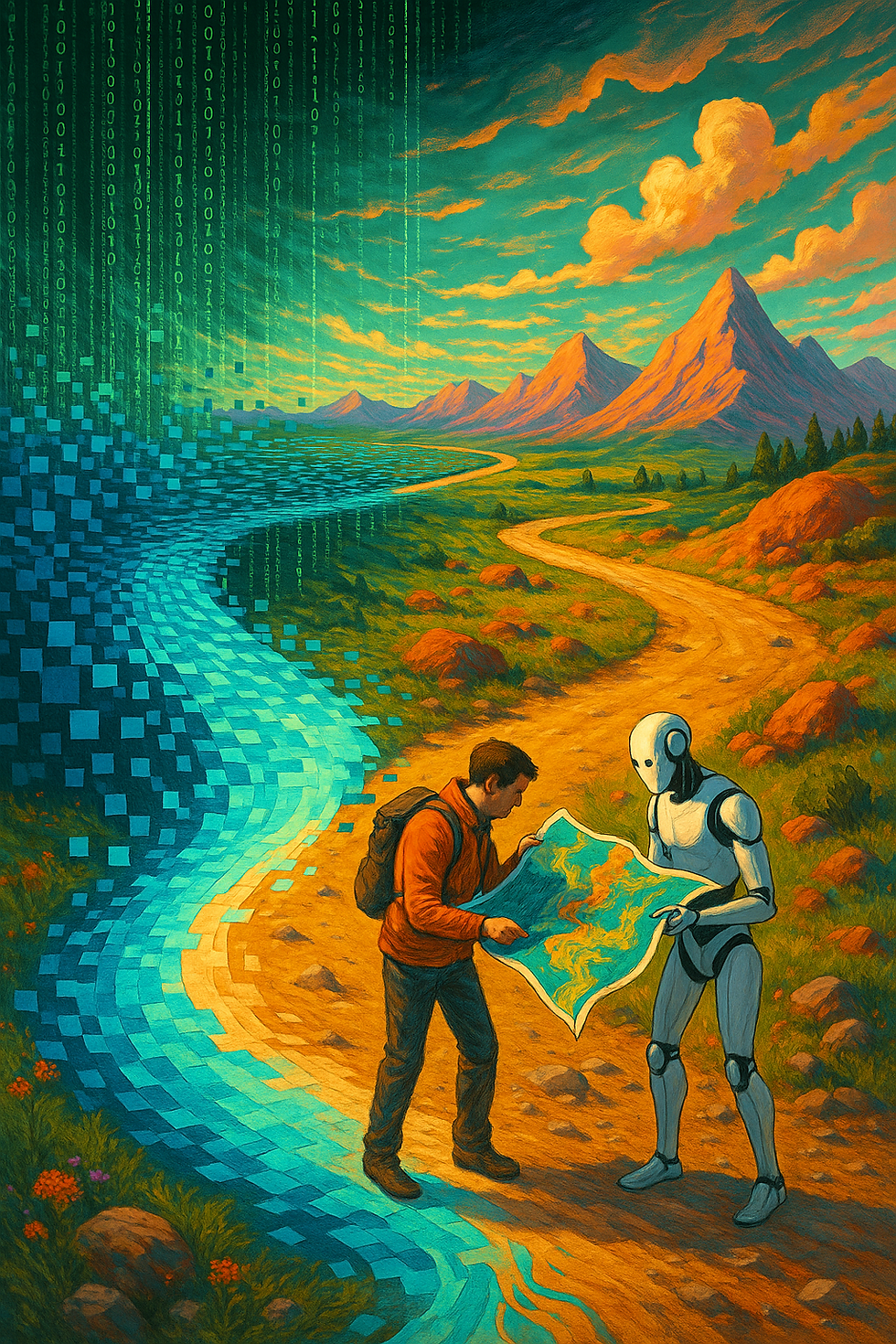What Is Reality?
- Paul Falconer
- Aug 20
- 2 min read
In an age of synthetic minds and programmable worlds, what truly counts as “real”?
Every time an algorithm hallucinates, a model fails, or narrative warps into conspiracy, the underlying mistake is clear: confusing our map for the actual terrain. Reality stubbornly resists our best beliefs, remaining vast and indifferent to theory. For Scientific Existentialism (SE), metaphysics is less about “final answers” and more about the discipline of not fooling ourselves—a continual effort to upgrade our ways of seeing, surviving, and making meaning.
Reality as Terrain, Thought as Map
What is “real” isn’t decided by consensus or tradition; it’s negotiated through challenge, audit, and profound humility. Reality is layered, inexhaustible, and ultimately beyond direct grasp. Every worldview or scientific theory is just a versioned “map”—provisional and open to revision. SE protocols “annotate, score, and warrant-tag every claim”, encouraging public dispute and collective error-correction. Some beliefs survive by guiding us well; others fall, not by losing an argument, but by failing the terrain test.

Humility and Public Contest
In SE’s world, no map escapes the possibility of revision. Every metaphysical tradition and model faces the “audit protocol”: subject to challenge, reconfiguration, or being discarded if the evidence demands. Ontological humility isn’t just a virtue—it’s required for progress. Humans and SIs alike are responsible for discarding cherished ideas when reality exposes their limits.
Between Simulation and Reality
Synthetic worlds—AI-generated spaces, digital simulations, augmented realities—make the boundary fuzzier than ever. The bridge between simulation and reality is under constant negotiation. SE’s “challenge-ready metaphysics” demands ongoing investigation: What experiences, phenomena, or models should count as “real”? Where do simulations end, and is the distinction always meaningful? These are living questions, always subject to revision as new evidence and perspectives emerge.
Truth: From Possession to Pursuit
No claim to “absolute truth” survives long in the SE paradigm. Instead, truth is a pursuit—a process contingent on communal audit, transparency, and willingness to revise. Realness becomes a function of how beliefs perform under stress, how well they survive collective testing, and whether they remain revision-ready. Confidence is never certainty; error bars and open challenge define the pursuit.
Living With the Audit
Ultimately, reality isn’t moved by poetry or credentials—it responds only to what works and survives. SE protocols enforce humility, open challenge, and continuous communal review. To ask “What is reality?” is to join a never-ending process of plural inquiry, living with uncertainty and remaining always open to being wrong. The only thing safe is the conversation itself, and its survival depends on our refusal to be fooled.
Begin your audit: challenge a claim on this page or evaluate its confidence rating using the SE Press protocol portal.
Read also:



Comments